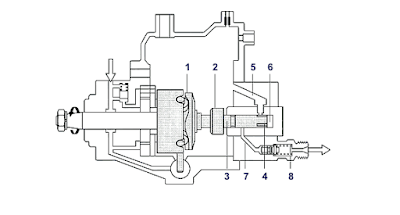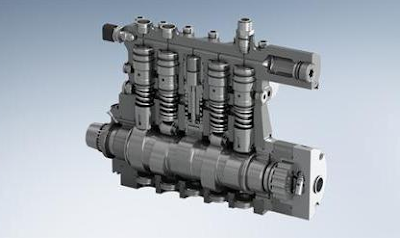5 Types of Fuel System in Diesel Engine
David Sigalingging
3 min read
Diesel Fuel system is different than gasoline fuel system, diesel engine using high pressure fuel because this engine using self ignition method. It is the reason why there are different fuel mechanism.However, the diesel fuel system mechanism is not just one type. There are several other types with each characters and advantages.
Then, what kind of fuel system on a diesel engine? see article below.
A. Seen from ignition type
If we see from the ignition methode, there are two types of fuel system, they’re direct injection and indirect injection.
1. Direct injection system

This system has an injector that leads directly to the top of the piston (combustion chamber located on the piston surface). The Piston on DI fuel system, has a basin or bowl on the top surface. This basin is used as a combustion chamber, in this basin the fuel will injected.
Advantages
- Have a simple diagram
- More engine power
- Better thermal efficiency
- Lower emissions
- Does not require a glow plug mechanism
Deadvantages
- Need high fuel pressure
- Need a special injector (multi point injector)
2. Indirect injection system (IDI)

IDI is widely used in diesel engines produce in 80’s to early 90's. However, the IDI system is not use for now because it has worse efficiency than the DI type. IDI has a special room called a pre-combustion chamber. The injector will directed into the pre-combustion chamber and not in the main cumbustion chamber on the piston surface.
Such a design will create a mixture of fuel and air within the pre combustion chamber. As a result, explosive power from combustion spurts into the main combustion chamber and pulls the piston moving downwards.
Advantages
- used for small capacity diesel engines
- Doesn’t need high fuel pressure
Disadvantage
- Poor Thermal efficiency (compared to DI)
- Worse emissions
- Less power
B. Seen from the injection mechanism
Viewed from the mechanism, there are three types of fuel system. They are rotary pump fuel system, individual fuel system, and common rail system.
1. Rotary fuel system

img by dieselnet.com
The rotary pump type, only has a plunger. However, these plunger can suppress all the chanels connected to each injector. It called as rotary system because this plunger moves rotary and the movement of this plunger will push all piston with correct timming.
Excess rotary pump has a minimalist design, so it does not take up more space in the engine room. In addition, there are few moving components. This makes better power efficiency.
And for the weakness, the rotary pump type has a weak injection pressure. So it less suitable for large capacity diesel engine.
2. Individual fuel system

As the name implies, the individual type uses an inline injection pump with individual plunger. That means if there are four injectors then there are four plunger too. Although it has many moving components, but it resulting high fuel pressure. So it is suitable for direct injection type diesel engines.
At the beginning , the injection pressure at this pump, about 3,000 - 5,000 PSI. however, now the injection pressure on an inline pump can reach 18,000 PSI. it is obviously very much higher than the rotary type which has an injection pressure of about 6,000 to 8,000 PSI.
3. Common rail system

The common rail fuel system is an electronically controlled fuel mechanism. The mechanism is very different from the two types above. the common rail system use a vane type injection pump that will pump fuel in a sustainable manner. This causes stable fuel pressure.
High-pressure fuel is channeled into a pipe called fuel rail. Fuel rail has several chanels that go to each injector, in other words the pressure inside the fuel rail is the same as the pressure inside the injector.
The fuel will be atomize to the combustion chamber when the solenoid inside the injetor open, who is controls the performance of the injector solenoid? it is the task of the ECU as an electronic controller.
Advantages
- It has a high injection pressure (above 2,000 bar)
- Very low NOx production
- Better engine power
- Lighter sound (clean diesel)
Weakness
- It depends on the electrical control system
- Wrong fuel type, resulting in damage to the injector
- The circuit is quite complicated.
Alright, this is the end of the article. If you have any question you can leave it below at the comment box. Hope increase our knowledge.

Berkomentar dengan bijak dan sesuai topik artikel.